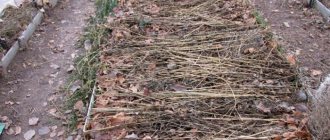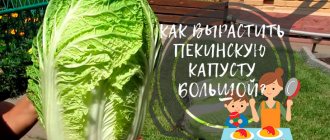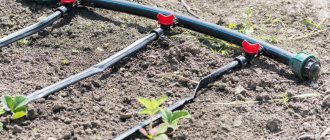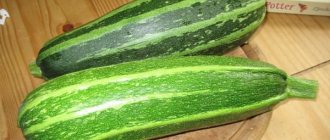Growing eggplants in Siberia – a few decades ago this idea seemed impossible. However, for many years in a row, gardeners in cold regions have been successfully harvesting these fresh nightshades. What varieties do Siberian summer residents love?
Eggplants are considered to be a heat-loving crop, which evokes associations with heat, southern sun and fertile soil. However, since the second half of the last century, “little blue” ones have been successfully grown in the middle zone and Siberia. Since these plants have a very long growing season (120-180 days), in the conditions of the short Siberian summer, preference should be given to early and mid-early varieties. In this article, we tried to select the most productive, reliable and hardy varieties of delicious eggplants for Siberia.
Eggplant varieties for growing in Siberia
The main thing when growing eggplants for Siberia is the choice of variety.
If you do not take into account winter heated greenhouses, where everything can ripen, only early-ripening or mid-ripening varieties should be grown in this climatic zone: The best varieties of eggplant for growing in Siberia also include: “Donetsk 14”, “King of the Market F1”, “ Beijing", "Universal", "Purple Dwarf", "Black Beauty", "Epic". Choose the best, depending on the growing capabilities, taste and desired harvest volume.
It is undesirable to use seeds that are more than three years old for planting in Siberian conditions.
Sowing seeds in a garden bed
In the south, when growing eggplants, you can do without seedlings. But in Siberia this can only be done by taking great risks and choosing very early varieties and hybrids for such cultivation. At the same time, there is not even a serious advantage in using greenhouses over open ground.
In order to have time to harvest the earliest eggplants, they must be sown in the garden at the very beginning of May. At this time, people in Siberia are just going to their dacha for the first time, so the garden bed needs to be prepared in the fall, and then a film shelter must be built. By the time of sowing, the soil at a depth of 10 cm should warm up to at least 15 °C. You can water the garden bed with hot water and then cover it with film.
The seeds are sown very thickly: their germination rate in spartan conditions may not be sufficient. In rows that are arranged every 50–60 cm, seeds are sown every 5–6 cm. After emergence, the plantings are thinned several times, removing the weakest specimens. The film is removed only when real summer arrives.
Planting and growing the best varieties of eggplants in Siberia
Growing eggplants in Siberia was not particularly popular before. At these latitudes, this process is very labor-intensive and time-consuming. Eggplant contains many useful substances and vitamins and is low in calories. In terms of taste, this vegetable resembles mushrooms. You can prepare many delicious gourmet dishes from it, and also use it for preservation.
Some time ago, the “purple beauty” could only be found in stores in Siberia.
Growing excellent eggplants in Siberia is no more difficult than in other regions
Today, agricultural technology in the northern regions has reached unprecedented heights, so growing eggplants in the Siberian regions is not at all difficult. But for this you need to pay a lot of attention to this capricious vegetable.
Bourgeois
An early-ripening, high-yielding variety that pleases both residents of the southern and northern regions with its fruits. The plant is powerful and large, semi-spreading, and has a long fruiting period. The fruits are very large (over 10 cm in diameter), dark purple with a slight gloss, more reminiscent of tomatoes than eggplants. The pulp is without bitterness and has an original taste. The bourgeois is not used to fighting diseases, so in order to grow healthy and large fruits, you will have to carefully study agricultural technology.
| Purpose | Productivity (kg/sq.m) | Fruit weight (g) | Maturation (days) | Flesh color |
| 4-6 | 400-500 | 105-110 | Greenish | |
Obtaining strong, hardened seedlings
Although growing eggplants in Siberia involves only early ripening, you still need to sow seedlings in late April - early May. The vegetative period of plants is quite long, so when planted directly in the soil, it will not ripen even in hot summers.
Important! Do not buy ready-made seedlings, especially if you are growing eggplants for the first time. There is no guarantee that they will sell you exactly the variety they named.
It’s better to control everything yourself, from the moment you buy seeds to harvest.
Before sowing, it is recommended to treat the planting material in some kind of growth stimulator, but this is not necessary. Any soil will do, however, we recommend taking a special one for seedlings. It is better to sow immediately into separate pots (preferably peat) in order to minimize trauma to the delicate root system during transplantation.
The earth should be moist and warm, so the container is covered with polyethylene and left in a warm, secluded place. If the soil temperature is about 28 degrees Celsius, expect germination in a week to 10 days. Then monitor the humidity by regularly watering the sprouts, provide light and feed twice before transplanting. Plant plants in a permanent place at the age of 70-80 days (budding phase).
It is important! Seedlings ready for transplanting already have a developed, strong root system and at least 7-8 true leaves. Only the strongest and healthiest eggplants are selected for seedlings.
About a week and a half before planting in a permanent place, the plants are hardened off by exposing them to open air and lowering the ambient temperature. Only after such preventive measures will the risk of seedlings burning in the sun and death from cold be significantly reduced.
Only the strongest and healthiest eggplants are selected for seedlings. About a week and a half before planting in a permanent place, the plants are hardened off by exposing them to open air and lowering the ambient temperature. Only after such preventive measures will the risk of seedlings burning in the sun and death from cold be significantly reduced.
Land preparation
How to grow eggplants correctly? After the optimal varieties for your region have been selected, it’s time to start preparing the substrate for further planting of seedlings.
First, decide on the container in which you are going to grow eggplants. This can be one large container or box, as well as small flower pots or disposable cups. If you sow the seeds separately, you will not have to resort to the process of picking the sprouts.
The direct mixing of all the necessary components to obtain the substrate deserves special attention. Take turf soil and mix it with sand, peat and humus. When the soil is ready to use, sprinkle it into your containers and pots and top it with a strong manganese solution. The best option is to purchase the substrate in a specialized store, but this will cost you a pretty penny.
If you did everything correctly, after two weeks the first shoots will appear in your containers. Do not try to dig up places where eggplant seeds are sown to check whether they are “alive”: such a procedure can disrupt the development process of the seed.
After sowing the seeds in the ground, do not forget to provide them with optimal conditions for growth. In particular, we are talking about the volume and frequency of watering. It is undesirable to oversaturate the soil with moisture, but you should not keep the substrate in drought either.
How to choose the right eggplant variety?
Eggplant is a capricious crop that requires almost a reverent attitude towards itself. Growing it is labor-intensive, but the end result is worth the effort.
Therefore, special attention must be paid to choosing suitable varieties
- Eggplants are low in calories because... 90% consist of water.
- Unfortunately, they are not particularly rich in vitamins, with the exception of B6 and C.
- However, they are rich in fiber, manganese, folic acid, and contain antioxidants.
There are a great variety of eggplant dishes. However, they all have one thing in common: the vegetable can only be tasted after heat cooking.
| I also came across varieties that were suitable for fresh consumption - I didn’t feel any particular taste delight from tasting them! |
To choose an assortment of eggplants for your needs, carefully read their characteristics. Only after that choose the ones you need.
1. Depending on the purpose of cultivation, choose varieties according to ripening dates:
- early ripening - for early use,
- mid- and late-ripening - for winter harvesting.
2
Do not forget to pay attention to the conditions for which this variety is suitable:
- for open cultivation,
- under temporary shelter (in a greenhouse),
- in protected ground (in a greenhouse).
3. Consider the year and origin of the variety:
- Old varieties are distinguished by some bitterness, which disappears after peeling and soaking in a salty solution.
- Modern ones are largely devoid of this drawback.
- Hybrids are more popular due to their increased yield, size and other beneficial properties.
Practice shows that in the Middle Zone, Siberia and the Far East it is desirable to cultivate early and very early samples, because eggplant is the most heat-loving crop of all nightshade crops (tomato, pepper).
Choose eggplants to suit every taste and color - modern selection provides an excellent opportunity!
Photo: from heat-loving eggplants, you need to choose the earliest varieties
Seed preparation
You can grow healthy seedlings only if you sow the seeds correctly. Before sowing seeds collected independently, they should be disinfected. To disinfect the seed, prepare a solution of hot water (100 ml, temperature 50 degrees) and hydrogen peroxide (3 ml), in which the seeds are soaked for 20 minutes and then washed in cool water. This procedure helps eliminate infections and strengthens the plant’s immunity. Seeds purchased in a store are treated against diseases and do not require additional disinfection procedures.
To obtain strong plants, the seed is kept for 24 hours in a solution of a growth stimulator (Epin, Baikal, sodium humate, etc.) diluted according to the instructions. Then they move on to the germination process. To do this, the seeds are moistened and placed in a container on a cloth. During the germination process, the temperature should not fall below 27 degrees, in addition, it is necessary to ensure that the tissue with the seeds is constantly moistened. After 1-2 weeks, the seeds begin to hatch. During this time, the soil should be prepared for sowing.
How to grow eggplants in Siberia
The main process in growing a heat-loving plant that will have to grow and bear fruit in Siberia is preparing high-quality seedlings
Pay special attention to varieties - choose only early ripening ones. Late or even middle ones will give only the first wave of harvest and die from the cold
It is important to correctly determine the timing of planting seeds. Early planting of seed material will provide large plants, but if they are kept in the apartment, the bushes will wither - there is not enough space on the windowsill
Planting seeds late will not allow you to receive seedlings in a timely manner; they will reach the soil late, which will certainly affect the timing of fruiting.
Sowing time for seedlings
Seed germination takes about 10 days, so it is better to send planting material to the substrate in early March - by the middle of the month the first shoots will appear. It is better to take universal or special soil - for tomatoes or peppers. Be sure to cover the box with film, remove it if necessary and moisten the soil with warm water.
After the first shoots appear, place the container on the brightest windowsill. In Siberia, the sun is not always enough for plants to develop well, so use lighting. Do not allow temperature changes - the eggplants will die.
Plants need to be picked twice and drainage holes made in containers - stagnation of water causes diseases.
Timing for planting seedlings in beds
It is recommended to send seedlings to open beds in Siberia in the last week of May, but this period may change depending on weather conditions. If spring is not warm, you will have to start planting young bushes in the first days of summer. Be sure to cover with film in the evening - cool nights will be destructive for plants.
Seedlings are planted in the greenhouse in early May. If it's cold outside, move the planting by one or two weeks to avoid risk
Moisten the soil carefully, avoiding overmoistening, which can cause eggplant diseases during cold weather.
Procurement of seeds
If earlier you may have preferred to buy eggplant seeds, then after collecting a full harvest from your garden, you can find an alternative - preparing seed material at home. To do this, select several of the largest fruits from the beds and leave them in a warm room for 5-10 days. Thus, the resulting seeds can be sown next season.
But if you follow the key recommendations from experts, the result will be good. Early or medium-ripening, eggplants will become an indispensable ingredient in your dishes, and they are also quite popular in canned form. The main thing is to protect the seedlings from exposure to low Siberian temperatures and pests. In this case, you can grow eggplants in your garden and independently prepare the seed for next spring.
How to care for eggplants in a greenhouse?
During the day, you can easily maintain +26 +29 degrees in the greenhouse by simply opening the window and door, but at night the greenhouse must be closed. If daily fluctuations are significant, the flowers will fall off, and the remaining ones will produce very small fruits. Containers with water placed in the greenhouse - barrels, buckets - will help.
A couple of weeks after planting, I feed it for the first time with a weekly infusion of nettle, diluted 1:10, a liter per bush. When mass flowering begins, I give foliar feeding by spraying the leaves with an infusion of a glass of ash in a bucket of water. After harvesting the first batch of crops, I make a third feeding with the same ash infusion, but this time I pour it at the root. I fertilize only after watering.
I tie a cotton strip behind the trunk to the greenhouse crossbars only when necessary, if the plant has a lot of heavy fruits.
Watering should be on hot days, with warm, settled water, moderately, and on cloudy days, once every 3-4 days is sufficient. I don’t spud or stepchild. It makes no sense to hill up eggplants at all; they do not have additional roots growing on top, like tomatoes, but have one main root and additional roots that go down 30 centimeters.
Rice. 16. I loosen after each watering.
But all this quickly gets boring, and therefore, as soon as I have enough mowed lawn grass, I mulch. This happens around the beginning of July.
Rice. 17. Layer of grass - from 1 to 5 cm. I throw weeds on top.
In addition to the function of gradually introducing organic matter into the soil, which occurs during watering and subsequent decomposition of grass residues, mulching also inhibits the growth of weeds, and also loosens the soil during subsequent surface loosening if weeds climb through the mulch layer.
Once I tried the Polivayka system. Although this system turned out to be quite inconvenient for watering moisture-loving tomatoes, because it passes water through itself very slowly (and tomatoes need a lot of water), it was useful for watering eggplants, and at the same time peppers growing in the same greenhouse.
Rice. 18. I placed a barrel behind the greenhouse (a blue spot is visible) and raised it to a height of about a meter.
The water in the barrel was heated in the sun. It was supplied to the plants through a hose system.
Rice. 19. Black thin hoses 6 m are laid out along the length of the greenhouse.
Fine-drip irrigation is well suited for eggplants, because the water comes in warm and flows slowly, without eroding the loosened soil.
Features of sowing seeds: step-by-step instructions
Growing eggplant seedlings is similar to sowing peppers and tomatoes. But there are certain subtleties, knowledge of which will help to grow strong seedlings (see video).
Seed selection
In the capricious Russian climate, it is recommended to grow hybrid forms that are unpretentious, resistant to diseases, pests, low temperatures, and high yields. But you cannot take seeds from them for subsequent sowings (like varietal eggplants), so you will have to spend money every year on buying seeds marked F1. The price of hybrids is higher, but the costs are fully recouped by good yields.
It is recommended to buy seeds from trusted manufacturers, pay attention to the description of the variety and features. Bags with hybrids often indicate that the seeds are processed, so they do not need soaking and germination
Containers: which ones are better?
The standard sowing scheme, when first common boxes are used, and then seedlings are planted in separate cups or pots, is not suitable for the crop
Eggplants do not tolerate transplantation well, they take a long time to get used to and straighten out. Therefore, the best way is to sow directly into separate glasses, pots, peat tablets
It is convenient to sow in small cassettes, and then pick up the bushes along with a lump of earth into larger containers. If there is not enough space, sowing in paper snails is used, and then the plants are planted in pots.
Good seedlings are obtained when grown in peat tablets. They are “washers” made of pressed peat and humus sealed in a non-woven casing. Growth stimulants and special antibacterial additives are also added to the composition. On one (upper) side there is a small hole where the eggplant seed is placed.
The tablets are placed at a short distance in a low tray and filled with warm water to swell. After some time they swell, increasing 2-3 times. The shell holds the shape of the “washers” and prevents them from falling apart.
Water the seedlings in tablets through a tray and drain off excess water. When the seedlings grow up, carefully remove the tablet shell, place it in cups along with the plant, and sprinkle with prepared soil. The roots are not injured during this picking, and the plant does not experience stress.
Preparing the soil
The culture prefers loose, fertile substrates with neutral acidity (pH 6.0-6.5).
Approximate composition of the soil mixture:
- garden soil (2 parts);
- humus (2 parts);
- peat (1 part);
- calcined river sand of coarse fraction (1 part);
- ash (liter per bucket of mixture).
Sand can be replaced with vermiculite, perlite, ash with crushed coals. Ready-made compositions are also suitable for sowing, but the composition must first be studied. Humus, vermiculite (river sand), ash, and turf soil are added to peat substrates.
Mixtures prepared by yourself are heated and disinfected (pink solution of potassium permanganate). To form beneficial microorganisms, it is advisable to use the addition of biological products (for example, “Baikal EM”).
Pre-sowing seed treatment
Hybrid seeds are sown directly into the ground. Seed material prepared independently, as well as varietal seeds, must be prepared for sowing.
Processing stages:
- warming up (dip the seeds into hot +45ºC water) for 4-5 minutes;
- disinfection in a pink solution of potassium permanganate (15 minutes). After the procedure, the seeds must be washed;
- soaking in any growth stimulant or microfertilizer solution. Epin, Zircon, Microvit are suitable;
- germination in damp tissue.
Some gardeners additionally harden eggplants before germination, keeping them for 4-6 days at night in the refrigerator at a temperature of +3ºC. During the day, the seeds are kept at +20ºC…+22ºC.
Sowing
After germination, the seeds are slightly dried and sown in prepared containers with soil. Sowing depth is up to 2 cm; before this, the substrate is slightly moistened.
For convenience, use tweezers, placing a seed in each hole. Cover the boxes or cups with film and keep them at a temperature of +25ºC…+28ºC. Usually sprouts appear after 5-8 days. As soon as thin shoots are visible, the shelter is removed, the containers with seedlings are placed in a bright place and the temperature is reduced to +18ºC.
Growing seedlings
In our climatic conditions, eggplants are grown only from seedlings. Eggplant seedlings can be grown both at home and in heated greenhouses. Planting eggplants in open ground with seeds is possible only in warm regions.
Sowing time
Eggplants are grown from seedlings, sowing seeds from late January to March. Depending on the region of our country, the optimal date for planting eggplant seedlings in an unheated film greenhouse or tunnel is the second or third ten days of May. Preparing eggplant seedlings for this planting date takes about 8-10 weeks. The growing period for seedlings is longer than for peppers, because eggplants in the initial phase are characterized by very slow growth. The best time is the last week of February - early March. Eggplant seeds are planted at the rate of 1–2 grams per 1 seed box (1 gram of seeds under optimal conditions can produce 150–200 good seedlings) in a light, warm substrate.
Soil for seedlings can be prepared from garden soil by adding peat and sand (25% each of the total soil composition). You can sow eggplant seeds in peat tablets.
Seeds are sown followed by picking or immediately in separate cups. If you grow seedlings and then pick them, growth is delayed by 1-1.5 weeks. Therefore, seeds are often planted in separate glasses or peat tablets. Sowing eggplant seeds for seedlings:
- In seedling boxes, seeds are sown in shallow grooves in rows of 3-4 cm, singly at a distance of 1.0-1.5 cm.
- Cover with a thin layer (0.5 cm) of river sand, irrigate with a spray bottle and cover with perforated film or non-woven material to protect the substrate from drying out.
- When sowing eggplants with peat tablets, the seeds are buried no deeper than 1 cm. Each tablet contains 1 seed. You can plant 2 seeds if both germinate, then after the cotyledons open, the tablet should be divided.
- Maintain a high temperature in the seedling box during the germination period:
- at 24-28 °C eggplant seeds germinate in 5-8 days;
- at 20-22 °C seedlings will appear in 2 weeks.
There are several reasons why eggplant seeds do not germinate:
- the room is cool - at low temperatures, seeds can germinate in 2-3 weeks;
- old seeds;
- When the soil is insufficiently moist (dry), the hatched eggplant seeds dry out.
Seedling care
Due to the long and complex regeneration of the eggplant root system, it is recommended to grow this vegetable from potted seedlings. The best pots for planting seedlings are 8-10 cm in diameter, filled with high-moor peat substrate.
Seedlings peak when the cotyledons are fully expanded and the first true leaves appear. After picking, the temperature should be maintained at:
- 20-24 °C during the day;
- 16-20 °C at night.
2 weeks after picking, it is advisable to feed the seedlings with multicomponent fertilizers, in a concentration of no more than 0.5%, in an amount of about 100 ml per plant.
Planting seedlings in a permanent place
Dates for planting eggplants in open ground in the Moscow region, the Middle Zone - you can plant them on May 15 and immediately after planting, cover the plants with white agrofibre (with a density of 17-23 g/m2), which is kept on the plants until the end of May. The planting area can be surrounded by tall plants, for example: in the south - a wide strip of wheat, and on the other side - strips of sweet corn.
Plants with the following characteristics are suitable for planting:
- 6-8 true leaves;
- equal in height (25-30 cm);
- The stem thickness is 5-8 mm at the root collar.
Before planting seedlings in a permanent place, they need to be hardened off. A suitable hardening method is to limit watering to 4-6 days before the expected planting date; in warm weather, take the seedlings outside during the day, gradually increasing the time of “walks”.
The scheme for planting eggplants in a greenhouse and open ground depends on the variety, growing method, method of pruning and caring for plants:
- in greenhouses, plant 2-3 plants per 1 m2;
- scheme for planting eggplant in open ground - with row spacing of 30-80 × 30-80 cm.
Most often, in film, unheated polycarbonate greenhouses, eggplants are grown on garden soil. This requires good soil preparation and the application of large amounts of organic fertilizer in the fall.
Eggplants can be grown in a variety of organic uniform or mixed media. A high-peat substrate or a mixed substrate in various proportions of low-lying peat, composted bark or pine sawdust is suitable. Optimal substrate moisture can be achieved through drip irrigation, which does not cause an excessive increase in air humidity.
Clorinda F1
An early-ripening hybrid of eggplant, which is characterized by a powerful and tall plant (90-100 cm) with a pronounced stem and short branches. Eggplants of this variety can be grown on trellises and cables in a greenhouse and greenhouse. The fruits are oval, diamond-black in color with a glossy sheen. The pulp is dense, practically without seeds, in good presentation and without bitterness. The taste is classic, mushroom. The plant is very resistant to cold and tobacco mosaic virus.
| Purpose | Productivity (kg/sq.m) | Fruit weight (g) | Maturation (days) | Flesh color |
| 2,8-4 | 900-1 200 | 65-80 | Whitish | |
What varieties of eggplant are recommended for planting in the Far Eastern region
On average, the humid climate of the Far East, with not very long summers, indicates specific names for eggplants for planting. Vegetables for it are represented by the following varieties:
Quartet
Early ripening, with a short ripening period - from 112 to 125 days. The fruit grows in a shortened pear-shaped form. The skin color is purple-green. The pulp is white-green in color and has no bitterness. Each vegetable produces a large number of seeds. The average weight of the fetus (11-13 cm) is 100-115 g. Plants with a yield of 10-11 kg are resistant to bacterial rot.
Panther
It is a mid-season variety, represented by plants of small height. The fruits are cylindrical in shape with a dark purple skin. The pulp is whitish. The weight of each (total yield 3-3.5 kg) varies from 130 to 230 g.
Bibo F1
This hybrid variety is a true Siberian, as it is capable of setting fruit in extreme temperatures. Belongs to early ripening. The plant is semi-spreading, low. The fruits have a regular oval-conical shape, white with a grayish tint, without a glossy sheen. The pulp is not bitter and gives eggplants an excellent taste. Resistance to fusarium and tobacco mosaic virus has been recorded. And in other respects, the Bibo F1 variety is very hardy and healthy.
| Purpose | Productivity (kg/sq.m) | Fruit weight (g) | Maturation (days) | Flesh color |
| 4-6 | 300-400 | 95-105 | Whitish | |
Growing eggplants in open ground in Siberia
Of all nightshade crops, eggplant is the most heat-loving vegetable, so when grown in open ground, it is necessary to cover the plantings during night cold spells and return frosts. Without the use of temporary shelters, eggplant in open ground in Siberia may not set fruit at all. On the other hand, when grown in a greenhouse, eggplant is severely affected by mites and, as a rule, the harvest does not work.
Eggplant varieties for open ground
Considering the exceptional heat-loving nature of eggplant, it must be borne in mind that not all varieties are successful in open ground, so the choice of varieties must be approached carefully. Do not try to grow foreign varieties in unprotected soil. Preference should be given to zoned varieties recommended for cultivation in a specific climatic zone.
For example, for Siberia I recommend varieties of Siberian selection. Siberian early ripening is a very productive early ripening variety that gives very good results in the conditions of Western Siberia. Vera, Japanese dwarf are also suitable varieties specifically for Siberian conditions.
I would like to pay special attention to the variety selected by SibNIIRS - Globus. The fruits are very large, round, weighing up to 1 kg
In total, a bush can produce 3-4 fruits. Very tasty, with snow-white flesh. Valued for its taste.
A description of eggplant varieties for Siberia can be found in the article:
Growing eggplants under film
In cold climates, when growing eggplant in open ground, you need to use temporary shelters. Film materials or acrylic can serve as shelters. Experience shows that eggplants feel especially comfortable under acrylic: acrylic transmits and retains heat and humidity well.
After warm night and day temperatures are established, the temporary film coverings must be removed and the eggplants left in the open ground.
Read about the timing and scheme of planting eggplants in open ground in the article:
Caring for eggplant in open ground
When growing and caring for eggplant, you can rely on your experience in growing peppers - their agricultural technology is very similar. Caring for eggplants comes down to weeding, loosening, watering and fertilizing. Eggplant plants do not need to be formed, nor do they need to be tied up - this is not a fragile crop. A garter may be required in a greenhouse if you are growing tall varieties of eggplant.
Read more about eggplant agricultural technology in the following articles:
Watering eggplants in open ground
The first watering of eggplant is carried out when planting: at least half a bucket or a whole bucket per hole.
In general, eggplant does not tolerate even temporary drying out, so the soil under the eggplant must be constantly moistened, otherwise the trunk begins to become woody, which greatly reduces the yield. Therefore, you need to water the eggplant as it dries. And be sure to loosen after each watering.
Fertilizing eggplant in open ground
Eggplants need fertilizing if the main fertilizer was not applied when planting. After planting the soil, young eggplant plants need mineral supplements. The second feeding can be done with both mineral fertilizers and organic matter.
Feeding eggplants after planting
The first fertilizing with mineral fertilizers is carried out 10-15 days after planting: 10 g of ammonium nitrate, 15 g of superphosphate and 10 g of potassium.
The second feeding is carried out another 10-15 days later, approximately two weeks after the first. You can use the same mineral fertilizers only in double the dose. You can replace mineral fertilizers with organic ones during the second feeding - eggplants love organic matter.
Feeding eggplants with chicken droppings
Mullein or bird droppings are used as organic fertilizer for eggplants. To prepare a concentrated infusion, take 3 kg of mullein or 0.5 kg of bird droppings, pour the raw material into 10 liters of water and leave to infuse for 5 days. To prepare a nutrient solution, take 1 liter of concentrated infusion and dilute it in a 10-liter bucket. Watering consumption: 10 liters for 6-7 bushes.
After each feeding, the plants must be watered with clean water to avoid burns.
Diseases and pests of eggplants in open ground
In open ground, eggplant, as a rule, is not affected by diseases.
The Colorado potato beetle can harm eggplant in open ground. The measures to combat it are the same as when protecting potatoes. I recommend collecting Colorado potato beetles by hand. As a rule, there is little eggplant at a summer cottage, so there is no need to use chemicals.
Read more about the fight against the Colorado potato beetle in the articles:
Olga Zhitnekovskaya, researcher
For information on how to properly collect eggplant fruits and prepare the seeds yourself, read the articles:
White eggplants
You can’t even imagine how beautiful the white eggplant fruits are.
White Lily
The fruits of this variety are white, delicate in taste, reminiscent of champignons and tender chicken meat. Harvest can be done on the 100th day. The bush is tall and strong, branched, it bears fruits with an average weight of 280 g. The variety is not demanding in care and cultivation, suitable for cultivation in open and closed ground.
White Night
This variety allows you to grow teardrop-shaped eggplants. One vegetable weighs 500-600 g. The height of the bush is 80 cm, it can ripen up to 6-9 fruits, the average weight of which is 200-270 g. Ripe vegetables can be harvested on the 105th day. The pulp is tender and does not taste bitter, and the harvested crop is suitable for long-term storage and transportation.
White Swan
This variety has dense pulp, so vegetables can be stored for a long time. White Swan is a mid-season type of eggplant, since harvesting occurs on the 110th day after entry. The height of the bush is 60-80 cm. When ripe, vegetables weigh 100 g, only they have thin skin.
It is better to grow this type of eggplant in closed ground with a constant temperature regime. Up to 12 fruits can be picked on one bush. Vegetable crops can be cultivated in open ground only if reliable protection from frost is created.
Swan
This is an early variety that is suitable for growing in open ground. If you regularly water the plants and maintain the temperature at least 20 degrees, then you can harvest the crop 85-100 days after germination. An adult vegetable weighs up to 300 g, and one bush contains up to 5 fruits.
Stork
This is an early ripening variety with egg-shaped fruits and their weight is 100 g. Harvesting must be done no later than 3 months from the moment of germination, otherwise the skin darkens and becomes hard.
The bushes grow up to 60 cm, they have strong and strong branches. The plant tolerates minor temperature fluctuations well.
Outdoor care
Getting a healthy harvest is influenced by proper watering and timely feeding of plants.
Water the plants with warm water. If you use cold well water for irrigation, the leaves will begin to turn yellow and the ovaries may fall off.
In dry weather, eggplants are watered every other day. On cloudy days, watering is reduced to once every 4-5 days.
As the eggplants grow, the ovaries form and the fruits ripen, regular fertilizing is carried out (at least 3 times per season) with mineral and organic fertilizers:
- two weeks after planting the seedlings with nitrogen fertilizers, which promote rapid plant growth and the growth of green mass;
- phosphorus fertilizers 2-3 weeks after the first feeding for better formation of ovaries and a powerful root system (what to do if the fruits do not set?);
- 10 days after repeated application, use organic fertilizers.
We plant and grow seedlings according to the lunar calendar 2022
The question of what is the best time to plant or pick our eggplants in 2022 will be answered by the lunar calendar of the current year.
Planting eggplants in FEBRUARY
The most favorable days for sowing seeds in February this year will be the following:
1st, 2nd, 3rd, 7th, 8th, 11th, 12th, 13th, 16th, 17th, 24th, 25th;
The best dates for picking are February 1, 2, 3, 7, 8, 16, 17, 20, 21, 22, 23, and 28.
It must be remembered that every month has both favorable and unfavorable days for planting crops. Unfavorable days are the full moon, as well as the three-day period of the new moon.
In February 2022, the full moon falls on February 19, and the new moon awaits us on the 4th, 5th and 6th.
Planting eggplants in MARCH
The month of March is a very good period for planting seedlings of any crop. And so, the most favorable days for planting eggplants in March 2022 are: 10, 11, 12, 15, 16, 23, 24.
The most suitable days for picking in March 2022 will be: 1, 2, 15, 16, 20, 22, 28, 29.
The new moon period in March falls on the dates: March 5, 6, 7; the full moon in March falls on the 21st.
Planting eggplants in APRIL
The best days for planting eggplants in April 2022 will fall on: 7th, 8th, 11th, 12th, 20th, 21st.
The most successful days in terms of picking seedlings in April 2019 will be the following: 2, 3, 7, 8, 11, 12, 16, 17;
The days that exclude planting can be considered April 4, 5 and 6, as well as the day of the full moon, which is in March 2022. will be on the 19th.
In this article I tried to reveal the main features of growing eggplants in Siberia. I hope my article will be useful to you and help you grow a good harvest.
Denis Povaga
1-2 times a year, I lead to results in blogging, subject to availability. For contact: ok.ru/denis.povaga
Comments: 2960Publications: 792Registration: 03/12/2013
When to plant eggplant seedlings in Siberia?
Since summer in Siberia is short, the choice of eggplants for growing should be made in favor of early varieties or hybrids, this is the first rule, this will allow them to fully ripen and get a good harvest.
The second rule: you need to choose varieties that are resistant to temperature changes and tolerate low temperatures well. There are many such seeds on the market now. Read more about preparing seeds before sowing.
Varieties suitable for sowing eggplant seedlings in Siberia: “Purple Miracle”, “Nutcracker”, “Matrosik”, “Robin Hood”. During the short Siberian summer, these varieties have time to fully ripen; in addition, they have good yields and a number of other advantages.
To avoid problems at the very initial stage, you should strictly observe the lighting regime: seedlings love light, temperature conditions and watering regimes.
You should also watch out for harmful insects, which can cause irreparable harm to small shoots. A very important point will be the choice of containers for growing seedlings; they must be spacious and disinfected.
How to plant eggplant seedlings in Siberia? Seedlings are grown only in heated greenhouses. Since another option is impossible not only in Siberia, but even in the southern regions. From the moment the seeds are planted in the ground until they sprout, 80-90 days pass.
Seedlings are planted at the end of May, even the beginning of June, when the threat of frost has passed. The seeds for seedlings should be planted at the end of February, beginning of March. There is no point in delaying the deadline too much, since the plant has a long growing season and the eggplants will not have time to ripen, even early ripening varieties.
Sowing dates and moon phases
In order for the seedlings to sprout together, it is also important to know when to plant eggplant seedlings in 2022.
It is best to do this during the waxing Moon. During this period, all living things are activated at the cellular level. During this phase, metabolism and sap flow increase, and the seeds produce friendly shoots, which are less sick and take root well in their permanent place of growth.
Sowing should not be carried out during the full moon or during the waning moon phase. During such periods it is better to carry out agricultural work:
- loosening;
- feeding;
- Hilling up sprouts.
You cannot plant during a new moon, which lasts about three days. These days it is better not to touch the seedlings so as not to damage the weakened plants. During the full moon, you should also not plant or cultivate the land.
Table of favorable and unfavorable days for sowing.
| Month | Days when you can plant | Days not to plant |
| February | 4, 5, 14, 17-19, 22-24 | 10, 11, 25, 26 |
| March | 3, 4, 17, 18, 22, 23, 30, 31 | 9-13, 24, 25, 27, 28 |
| April | 13, 14, 15, 19, 28 | 6, 7, 11, 12, 26, 27 |
In February and March 2022, the Moon often passes through the fertile zodiac signs: Cancer, Scorpio and Taurus. If you sow on these days, the germination rate of the seeds will be high, and the seedlings themselves will be strong.
When to sow eggplant seedlings in Siberia
The list of crops grown by Siberian gardeners is constantly expanding thanks to breeders. Now you can plant eggplants on the plot. Or rather, not only to plant, but also to harvest a decent harvest. At the same time, choosing a variety for sowing will not cause much difficulty.
For a region with characteristic climatic conditions, you will have to pay attention to some parameters:
- Maturing period. The short summer dictates its own rules and the choice will have to be made among early hybrids or varieties of eggplant. They will have time to ripen and provide summer residents with a good harvest.
- Variety selection. Preference should be given to varieties with high resistance to temperature changes and low temperatures. Be sure to take into account all the characteristics of the variety as described.
- Powerful eggplant seedlings. One of the main components of success.
- Warming up the soil. To ensure this parameter, many grow eggplants in high beds, under double, high-quality shelter.
In addition, there are nuances of growing eggplants in Siberia, which summer residents willingly share with each other. Eggplants are considered a very healthy vegetable that contains a lot of nutrients, has a low calorie content and excellent taste of the fruit.
When and how to harvest vegetables?
The harvest in Siberia begins in late July - early August. The technical maturity of the fruit is determined by size, characteristic color and white pulp. The fruits are collected selectively as they ripen.
Advice! Eggplants should be picked slightly underripe, otherwise they will produce a lot of seeds and the skin will become rough. In central Russia, including the Moscow region, it is much easier to grow eggplants. However, in any region, in order to obtain the optimal shape of the bush, allowing for a good harvest, eggplants must be pinched.
So, by choosing early ripening varieties of eggplants, following simple recommendations for preparing seeds and soil, you can get a rich harvest of eggplants in the harsh Siberian conditions.
The best varieties
Growing eggplants in the territory beyond the Urals requires agrotechnical knowledge, compliance with the timing and rules of planting the crop. Without this, it is impossible to achieve the ripening of purple fruits. For the north-west, we need those vegetable varieties that are bred and tested by local breeders.
Eggplants for open ground
In open ground, hybrids are cultivated that can withstand low temperatures, do not require special care and are able to bear fruit abundantly.
It is better to choose early ripening types of vegetables:
A variety with large fruits, Ox Heart F1, is valued for its increased resistance to fungal infections. The oval berries reach a weight of 400 grams, are covered with a smooth glossy peel, with cream-colored pulp. The bushes bear fruit for a long time in sunny and warm weather. The eggplant Almaz has been tested by summer residents and reaches maturity 109-120 days after germination. Fruit cylinders reach 100-150 grams with a length of 14-18 centimeters
The description of the variety also includes the fact that the fruits are universal for use; they are suitable for canning and preparing stews and salads from them. One cannot ignore the Siberian Prince, from each bush of which up to 10 large fruits are collected. They note the excellent fruit set of the hybrid and its ease of care
The berries, weighing 300 grams, are covered with a thin purple skin, with light pulp inside. Harvest in the first ten days of August. Eggplants of the Skorospely variety grow in the open ground of Siberia and bear fruit well. Even under unfavorable weather conditions, the plant produces fruits that have reached technical maturity. Early ripening Prince Fairytale is valued for its excellent, without bitterness, taste of the pulp, small number of seeds, and delicate skin. Round-shaped and white vegetables ripen early in the Easter Egg hybrid.
In order for the eggplants to have time to ripen on the plot, it is necessary to choose varieties bred by Siberian breeders.
Eggplants for the greenhouse
In order not to risk the future harvest, summer residents grow crops such as eggplant in greenhouses. For beds under film coverings, not only early-ripening varieties are suitable, but also those with medium ripening periods.
A good choice is the Robin Hood hybrid with high yields, ease of care and growing conditions. On bushes 1 meter high, up to 10 fruits weighing 200-300 grams can ripen.
Hybrid Maria with bushes 75 centimeters high and fruits weighing 200 grams has gained popularity for good reason. From 1 square meter of the variety, up to 7 kilograms of smooth, even fruits of dark purple color are collected.
Sailor
The fruits of this variety are difficult to confuse with any others. The striped lilac-white color clearly distinguishes them from their “brothers”. The plant is semi-standard, spreading, up to 75 cm high with a large number of oval-pear-shaped fruits. The pulp is without bitterness and is best suited for preparing caviar and other culinary dishes. These eggplants can be stored for quite a long time without losing their presentation. The variety was noted to be resistant to Verticillium wilt.
| Purpose | Productivity (kg/sq.m) | Fruit weight (g) | Maturation (days) | Flesh color |
| 8-10 | 250-400 | 100-105 | Snow White | |
Planting in open ground
It is necessary to transplant eggplants into open ground in early June. At this time, the threat of returning frosts will completely pass.
The harsh climate can be easily compensated by soil. It must contain organic elements and be neutral in composition. In this region, the soils are highly acidic. To reduce it, you can use chalk or dolomite flour. These are effective and safe means.
Before planting, the soil is prepared. It needs to be dug up along with sand. The latter is taken at the rate of 1 bucket per 1 sq. m. soil.
Choose well-lit areas, without drafts. Seedlings are planted according to a pattern of 40–50 cm – the distance between seedlings and 50-60 cm – between the rows. This method will allow the plants not to shade each other.
At first, the seedlings are covered with non-woven material (Agrotex, Spunboard) at night. When the sprouts become stronger, this method of protection can be removed.
Ping Pong F1
This variety does not produce a very large harvest, but it has a number of other advantages. The bushes are semi-spreading, medium-leaved, 0.7-0.8 m high. The fruits are spherical, rather small (4-6 cm in diameter), during ripening they become white, with a slight gloss. The pulp is dense and gives the eggplant a piquant taste. The fruits are well stored and do not lose their consumer properties even after long-term storage. Plants are able to resist the main diseases of nightshade crops.
| Purpose | Productivity (kg/sq.m) | Fruit weight (g) | Maturation (days) | Flesh color |
| 1-1,5 | 60-80 | 110-115 | Greenish white | |
Diseases and pests
Most often, eggplants are affected by powdery mildew, late blight, and gray rot. All of them are of fungal origin. They are controlled with fungicides. For example, “Topaz”, “Alirin-B”, the drug “Switch” helps against gray rot. For preventive purposes, the garden beds are kept clean.
In open ground, eggplants are often affected by the Colorado potato beetle. To prevent spread, plants are regularly treated with a strong infusion of onion peels. Individuals are also examined and collected. If there are a large number of beetles, crops are treated with chemicals.
In a greenhouse, bushes are often attacked by spider mites. Spraying eggplant bushes with a solution of laundry soap, an infusion of garlic feathers, wormwood, and wood ash helps combat it.
The problem of diversity and difficulty of choice
The journey from the 9th century to the 20th century brought the new vegetable not only global expansion, but also significant varietal enrichment. If in 1910 Russia knew only two varieties of eggplants - Odessa early and Bulgarian semi-long - then the beginning of the third millennium gave birth to hundreds of new varieties, hybrids and semi-hybrids. Now the main problem for farms and summer residents is not the process of searching for at least some seeds, which rarely go on sale, but the process of choosing the right varieties from a huge assortment, oriented to any climatic zone of Russia and the Near Abroad.
Today, eggplant is cultivated everywhere - from Kaliningrad to Kamchatka. And even Siberia, with its extreme differences in day and night temperatures, is no exception. There are whole galaxies of varieties for growing in greenhouses and in open ground. In this case, you can choose the desired shape of the purple beauty, and its preferred length, and even color from milky white to bright purple. The wealth of choice is such that the founders of the blue vegetable themselves never dreamed of.
Since it is impossible to describe all varieties in one article, we will limit ourselves to only a small part of them, intended specifically for Siberia and zones with similar climates.











